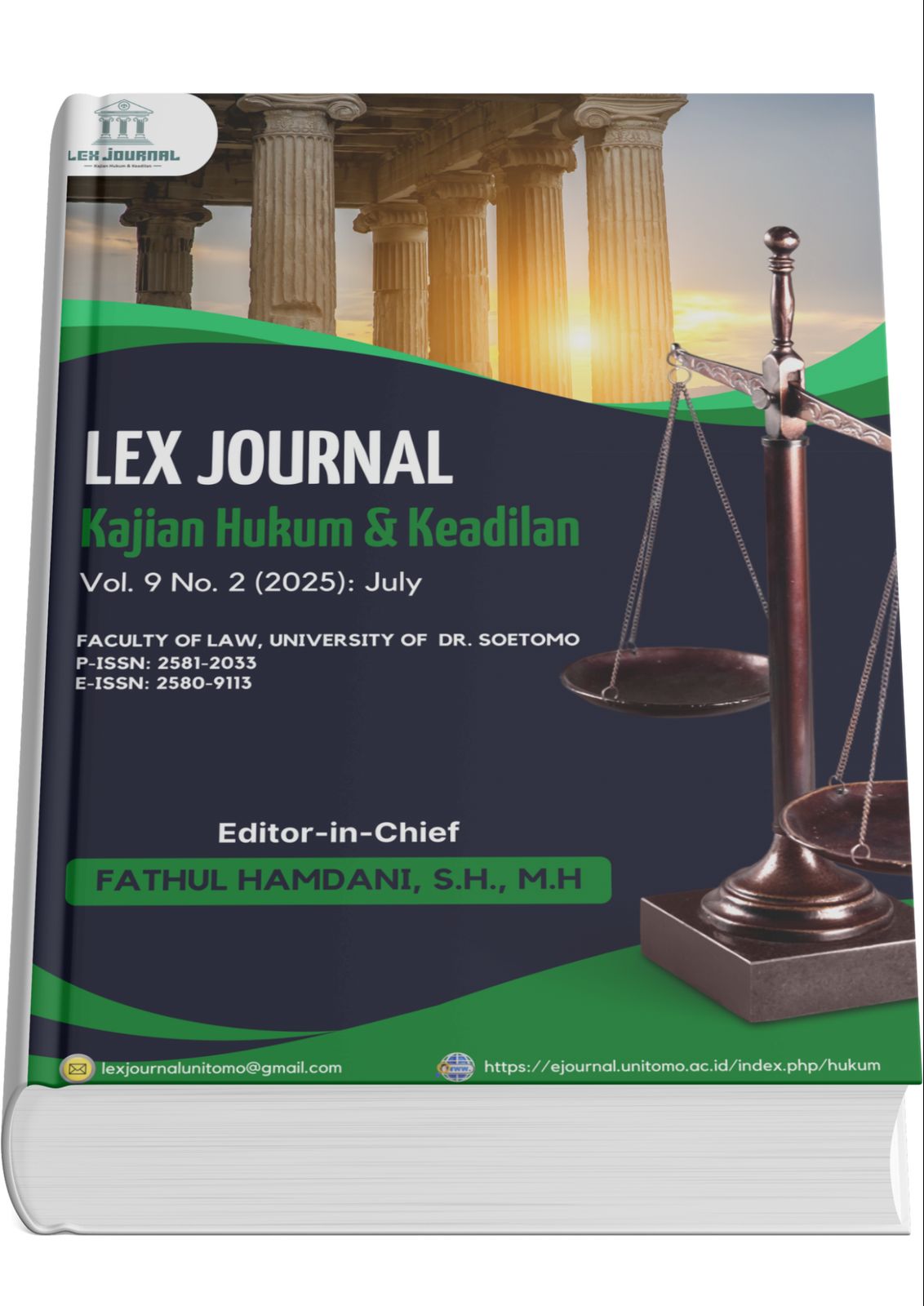Crime Prevention through Environmental Design from a Legal Perspective in Indonesia
 Abstract views: 74
,
Abstract views: 74
,
 PDF downloads: 51
PDF downloads: 51
Abstract
This study aims to analyze crime prevention through an environmental design approach in crime prevention policy in Indonesia and to analyze weaknesses in crime prevention through an environmental design approach in suppressing the crime rate in Indonesia. Crime prevention through environmental design is related to interaction between humans and the physical environment. Efforts to control behavior through design and use are as old as civilization. Crime Prevention through Environmental Design (CPTED) is based on the idea that appropriate design, natural access control, and effective use of the built environment can reduce the incidence and fear of crime, by using normative legal research methods. The results of this study indicate Crime prevention through environmental design approach in crime prevention policy in Indonesia, Indonesia has never used CPTED concept in crime prevention policy in Indonesia, CPTED concept is a crime prevention concept that is not familiar in Indonesia. However, in Indonesia, the concept of a Secure Guard Area is a concept that offers an area with a crime prevention mechanism that is fully handed over to security officers. Crime prevention in the concept of security officers must have the ability to control territorial areas, the ability to carry out supervision, must be able to have the ability to describe a good environmental image, so that officers can provide comfort and security for the areas under their duties.
References
Central Bureau of Statistics, Crime Statistics 2022 (Jakarta: BPS, 2022).
Lab, Steven P, Crime Prevention Approaches, Practices and Evaluations (Jakarta: Police Science College, 2017).
Mustofa, Muhammad, Criminology Research Methodology, 2d ed (Jakarta: Kencana Prenada Media Group, 2015).
National Crime Prevention Council, CPTED Guitbook (Singapore: Public Affairs Department, Police Headquarters, Level 4, New Phoenix, 2003).
Rahardjo, Satjipto, Hukum dan Masyarakat (Bandung: Angkasa, 1981).
Sudiadi, Dadang, Crime Prevention in Housing (Housing Warning Under Guard) (Jakarta: Yayasan Pustaka Obor Indonesia, 2015).
United Nations Office on Drugs and Crime, Handbook on the crime prevention guidelines Making them work (United Nations Office at Vienna: Publishing and Library Section, 2010).
JOURNAL
Armitage, Rachel, “Crime Prevention through Environmental Design” in Environ Criminol Crime Anal, 2d ed (Abingdon, UK: Crime Science Series, Routledge, 2016) 259.
Cozens, Paul, Greg Saville & David Hillier, “Crime Prevention through Environmental Design (CPTED): A Review and Modern Bibliography” (2005) 23:5 Emerald Gr Publ Ltd 328–356, online:
Crowe, Timothy D & Diane L Zahm, “Crime Prevention through Environmental Design” Orig Appear Fall 1994 issue L Dev Mag is a Publ Natl Assoc Home Build this Artic is Repr with Permis from NAHB (1994), online:
Fauzia, Ana, Fathul Hamdani & Deva Gama Rizky Octavia, “The Revitalization of the Indonesian Legal System in the Order of Realizing the Ideal State Law” (2021) 3:1 Progress Law Rev 12–25.
Queensland Guidelines, “Crime Prevention through Environmental Design” (October 2007), online:
WEBSITE
Cozens, Paul, “The Dark Side of Crime Prevention through Environmental Design (CPTED)” in Oxford Res Encyclopedias (Criminology and Criminal Justice, 2017).
The International Crime Prevention Through Environmental Design Association, “Primer in CPTED - What is CPTED?”, online:
Copyright (c) 2025 Suntarajaya Kwangtama Tekayadi, Febrian Rizki Pratama, Muh. Zafri Ramadhan

This work is licensed under a Creative Commons Attribution-ShareAlike 4.0 International License.









